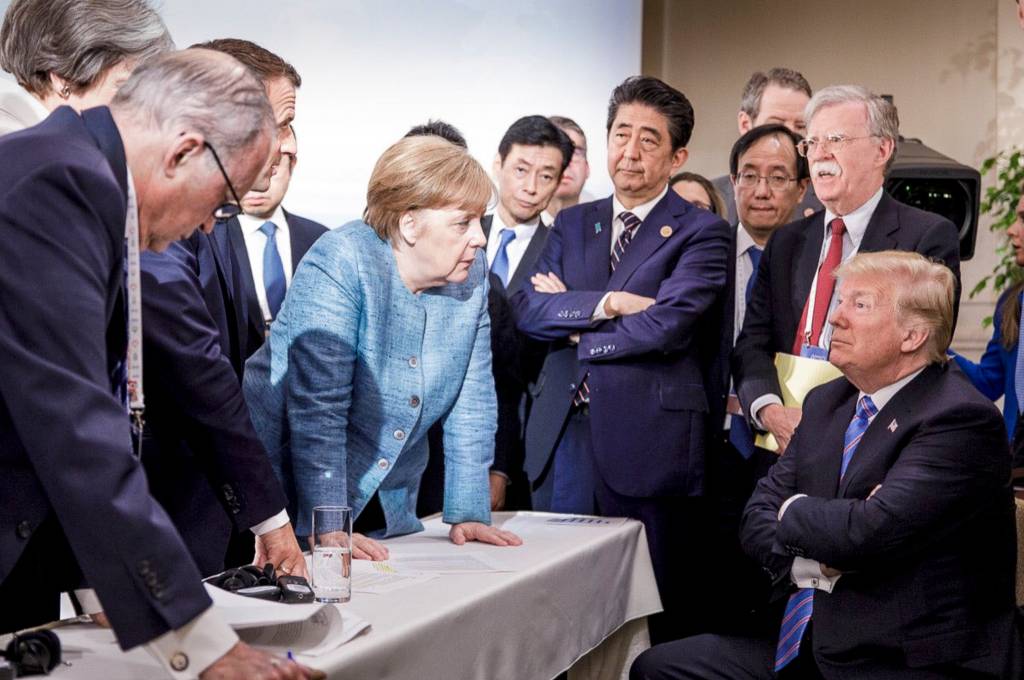Just over a year ago, Trump announced the US will begin the process of pulling the United States out of the Paris Agreement. Over the weekend, he did it again – this time suggesting the US would back out of the G7 Communiqué penned at the 2-day summit of the world’s largest advanced economies in Charlevoix, Quebec.
How’d he do it, you ask? By tweet, of course – late Saturday night, just hours after the agreement was finalized:
Based on Justin’s false statements at his news conference, and the fact that Canada is charging massive Tariffs to our U.S. farmers, workers and companies, I have instructed our U.S. Reps not to endorse the Communique as we look at Tariffs on automobiles flooding the U.S. Market!
— Donald J. Trump (@realDonaldTrump) June 9, 2018
Not that this disarray comes as a huge surprise. In the lead-up to the summit, many reports came out that he was going to disrupt and divide the meeting, by challenging the international consensus on trade and diplomacy.
Climate change was originally slated as one of the main issues of the summit this time around. Yet the Communiqué (which doesn’t even mention climate until bullet number 23), does little more than “reaffirm” past commitments to fight climate change through a vague multitude of market-based means involving all possible actors. While it does include increased commitment to working for a just transition and with civil society, it doesn’t even mention previous G7 commitments to phase out fossil fuel subsidies by 2025, a timeline that now looks highly unlikely given G7 countries are still spending $100 billion on them per year.

Justin Trudeau along with the leaders of the UK, Italy, Germany, and France did offer a concrete initiative – a new non-binding charter on plastics. Canada will put $100 million to the effort. But it’s a drop in the bucket. Just two weeks ago, Trudeau allocated 4.5 billion $CAD to build a tar sands pipeline from Alberta to the British Columbian coast, despite fierce opposition.
We’re running out of time. Global emissions rose between 2016 and 2017. We need real climate leadership now – leadership that properly identifies the drivers of the climate crisis, names them, and takes bold action to stop and chart a new course. We should be able to expect this from the leaders of the world’s most developed economies.
Yet all this quibbling and a brewing trade war among supposed allies goes to show that our national leaders are barely in a position to agree among themselves, let alone implement real action for the climate and regular people. Make no mistake – they are failing us. So what’s the answer?
In a phrase, local climate action. We need to hold our local elected officials accountable, all over the world, at the same time. This is where we can dig in, get our hands dirty, and see real change on the ground. A recent study even spells out how action on carbon reduction at the local level is significantly more effective than at higher levels of government.
We’ve all got to try. You can join the global effort from where you live, and get organized between now and September 8 to secure local commitments on climate.